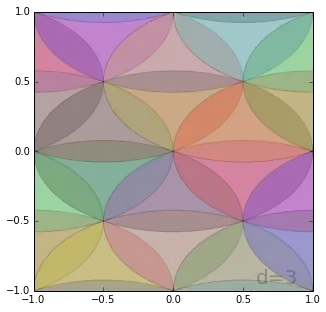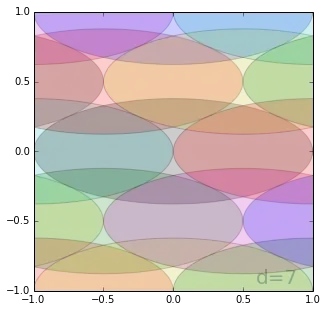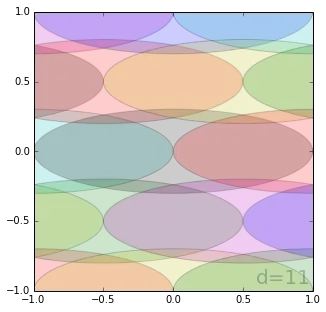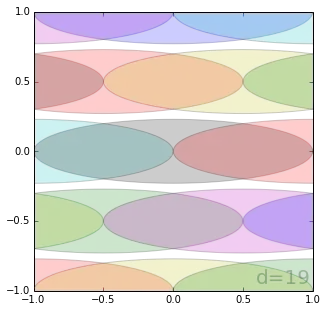In an attempt to answer one of the bounty questions, I have started picturing Euclidean division in quadratic fields. In theory we would like the equation:
$$ a = b\,q + r \hspace{0.25in}\text{with}\hspace{0.25in} N(r) < \tfrac{1}{2}N(b)$$
The ring of integers of $\mathbb{Q}(i)$ is $\mathbb{Z}[i]$ and the norm is $||a + bi|| = \sqrt{a^2 + b^2} $, so it seems like it should be enough to show the sumset ( or Minkowski sum)
$$ \mathbb{Z}[i] + \left\{ x^2 + y^2 < \tfrac{1}{2} \right\} = \mathbb{C}$$
and the picture confirms that Euclidean division should neatly hold in $\mathbb{Z}[i]$ with room to spare.
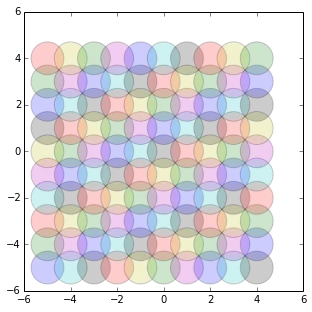

For $\mathbb{Q}(i \sqrt{3})$ we can find the ring $\mathbb{Z}\left[\frac{1+i\sqrt{3}}{2}\right]$ with norm $ ||a + \omega b|| = \sqrt{ a^2 + ab + b^2 }$. Euclidean geometry is helping is out so far.
The corresponding result for $\mathbb{Q}(i \sqrt{7})$ almost looks right but I see tiny patches missing and by $\mathbb{Q}(i \sqrt{11})$ forget it. Wikipedia says there the norm-Euclidean quadratic fields are $d = -1,-3,-7,-11$ and no more.
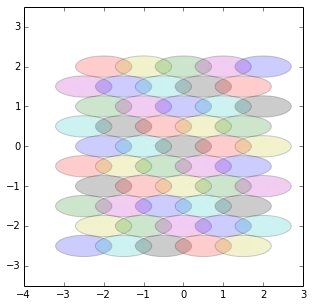
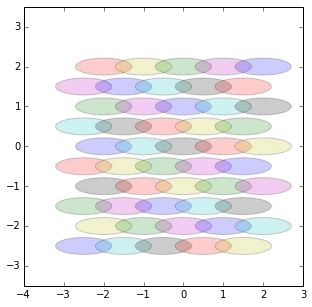
Why is my picture of the Euclidean algorithm inaccurate? And how to we get the missing points?
